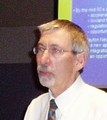The Green Infrastructure Guide: Issues, Implementation Strategies and Success Stories

The Green Infrastructure Guide is an invaluable reference document for those who embrace a ‘design with nature’ philosophy. “The Guide’s purpose is to encourage successful designs, by reporting on what the legal and policy strategies are, what some of the implementation hurdles (and solutions) have been, and how they have been effective in achieving sustainability goals,” wrote Susan Rutherford.










